Roman assemblages
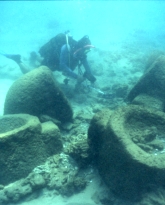
Cargo of millstones discovered off Herzliya coast
Assemblages of four Roman shipwrecks from the second century AD were discovered in the Kfar-Samir region off the municipal beach south of Haifa. The cargoes included anthropomorphic bronze figurines, bracelets, necklaces, pendants with phallic symbols, balance scale bars, silver and bronze coins, lead stoves used onboard ships, lead fastenings of wooden anchors, iron anchors, bronze nails and other domestic objects, craftsman’s-tools and ship’s fittings made of copper, bronze, iron and lead.
Three additional Roman assemblages were discovered off the Carmel coast region between Haifa and Atlit, and two additional assemblages off Ashqelon coast in the south of Israel. The northern-most assemblage from Ashqelon included a unique Bronze trumpet, a set of bronze weights (one of them weighing 20 kg), bronze oil lamp and a unique lead stove that was used for cooking and heating water. A cargo of six biconic millstones made of basalt was recovered 600 m south of Apollonia anchorage at a water depth of 3 m. The pairs of millstones were brand-new and they were most probably wrecked on the way to the customer who ordered them. Bronze nails were scattered around the millstones attesting to the wreckage event.
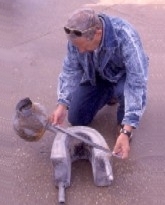
Ashqelon, Roman Lead Stove for Heating/Cooking
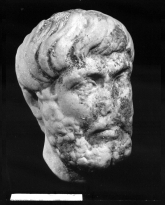
Life Size Marble Head recovered off Ashkelon Coast
Lead Cooking Braziers
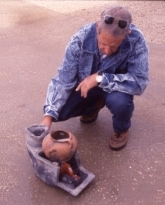
Brazier (cooking stove) from Kfar Galim
One of the problems seafarers had to deal with in antiquity was using fire for cooking and heating onboard ships, without endangering the vessel. The discovery of fire-blackened everyday dishes at the stern of certain shipwrecks seems to support the idea that these ships had 'kitchens'. Various types of braziers were probably used for this purpose onboard sea-going vessels.
The braziers are generally shaped like hollow shoes, forming a closed container with a cylindrical opening (chimney) for pouring in the water. The upper external part is formed like a rectangular fire-bowl in which the fuel was placed and lit. The upper side of the brazier has three supports (some are astragal shaped, some shell-shaped). Some of the chimneys are decorated with various motifs. A lead strip was sometimes placed or soldered inside the hollow space between the two bottoms of the fire bowl to prevent melting down of the brazier.
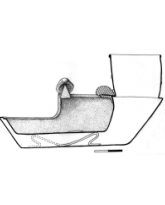
Cross-section of a Brazier
Bronze 'Fair leader' in the shape of a duck and Ring-shaped leader
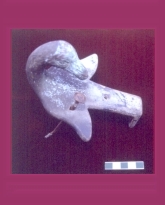
Duck-shaped Fair leader
The bronze artifact was found between Haifa and Atlit off the Kfar Galim coast (belonging to a Roman shipwreck assemblage). It may have been used as a towing hook or as one of the fair leaders in the rigging system of the ship. Its purpose was to alter the pulling direction of a rope, while simultaneously maintaining its linear movement ability (acting like a pulley).
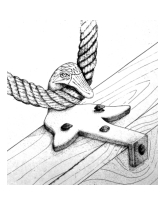
Reconstruction of Fair leader
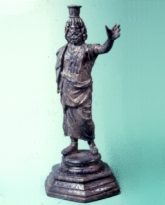
Figurine of the God Serapis, Roman Shipwreck off Haifa